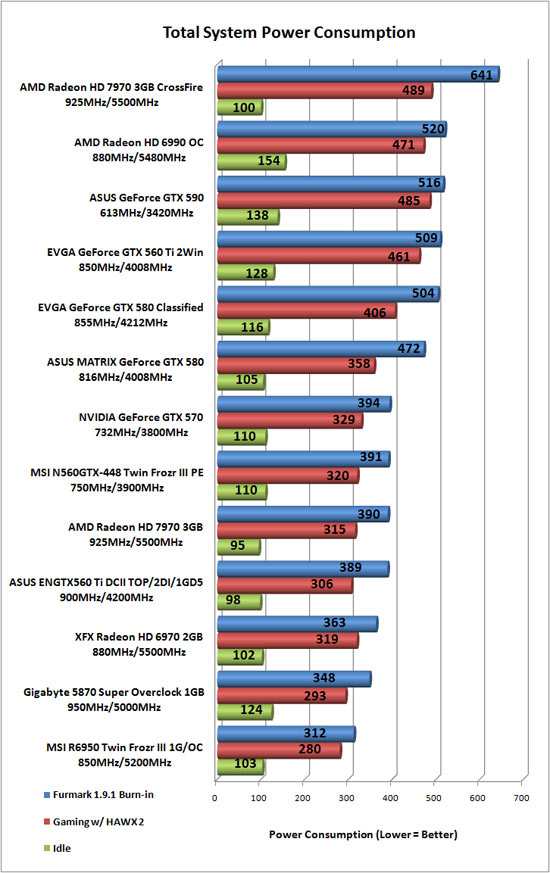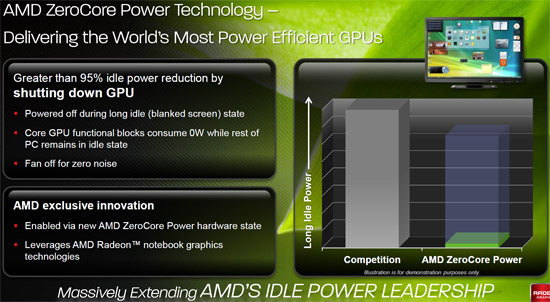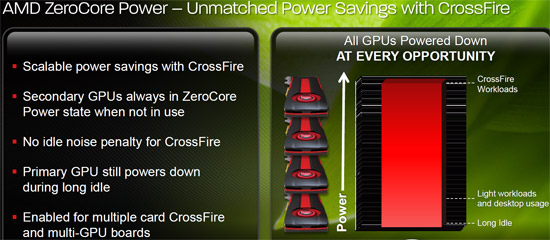ASUS Radeon HD 7970 3GB CrossFire Review
Power Consumption & Temps
For testing power consumption, we took our test system and plugged it
into a Kill-A-Watt power meter. For idle numbers, we allowed the system
to idle on the desktop for 15 minutes and took the reading. For load
numbers we measured the peak wattage used by the system while running
the OpenGL benchmark FurMark 1.9.1 at 640×480 resolution. We also ran the game HAWX 2 and looped the benchmark three times and recorded the highest Wattage seen on the meter.

Power Consumption Results: A pair of AMD Radeon HD 7970 video cards running in CrossFire sucked down some serious power and our system was pulling in 641 Watts at the wall or around 5.5 Amps when running Furmark. This is some serious power draw, but remember you are also getting insane performance. Running a pair of the fastest video cards in the world is certainly not ideal if you are going for energy efficiency. That said at idle the Crossfire system drew only 100 Watts of power from the wall, which was only 5 Watts more than a system with a single 7970 card in it!

The AMD Radeon HD 7970 has a new technology called ZeroCore Power, which shuts down the GPU during periods of long idle (when the screen goes to sleep). When the GPU goes to the power state the fan stops spinning and the GPU core itself consumes 0W while the rest of the PC is still running. This is a really interesting feature and we found that it works great. After the system is at long idle the video card basically shuts down and goes to sleep. With a single card in our test system the idle power was down to 86 Watts and with two cards in the system it was 93 Watts.

One of the main reasons AMD developed this technology was from feedback from CrossFire users as they didn’t need all those cards running when at idle as they produce noise and heat when it isn’t necessary.

It’s virtually impossible to get idle temperatures when running Crossfire as one of the cards is in a ZeroCore power state and the temperature sensor is shut down. We ran Furmark to get load temperatures and one card peaked at 87C and the other at 79C. The hotter of the two cards was of course the inside card as it was getting less airflow and sucking air from the back of the other Radeon HD 7970.

Comments are closed.